
Fault tree and event tree in risk analysis
|Event Tree Analysis © Atkins 2020 Introduction to Event Trees • An Event Tree is a representation of possible sequences of events • Analysis is.
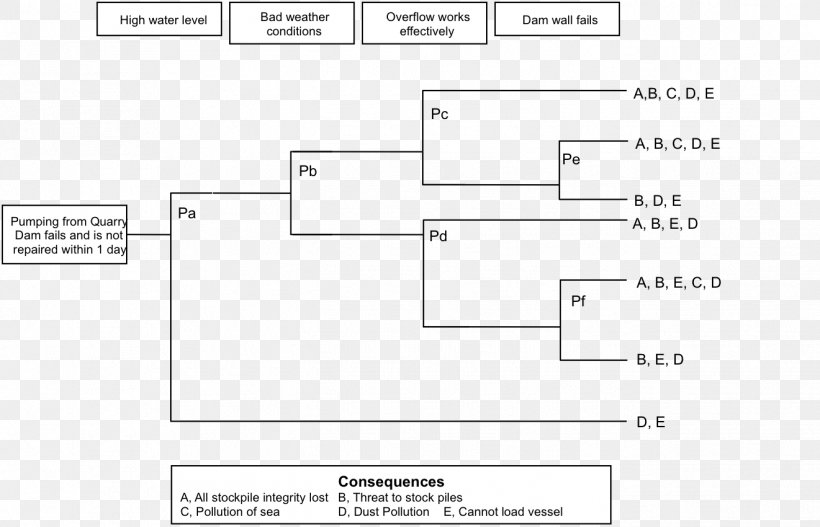
Event Tree Analysis Fault Tree Analysis Hazard Analysis Risk Assessment, PNG, 1321x850px, Fault
The event tree analysis is rarely sufficient in itself for this application; it is usually an input to the determination of outcome frequency used in the risk calculation. 1.1.1.4. The construction of an event tree is sequential, and like fault-tree analysis, it is top-down (or left-right in the usual event tree convention). Analysis starts at.

Event Tree Analysis Isograph
Event tree analysis (ETA) is an analytical technique used to evaluate process and events leading to a possible accident. It is a causal analytical technique. It is based on an analysis of a sequence of actions and events that have led up to an accident. A graphical logical model is used to analyze this. The response to the accident of the human.

Event Tree Analysis — The Risk Assessment Application Tool by Lynia Li Medium
Event tree analysis is an example of inductive analysis. It uses the same logical and mathematical techniques as Fault Tree Analysis. However, whereas a fault tree analyzes how an undesirable top event may occur, an event tree considers the impact of the failure of a particular component or item in the system, and works out the effect such a.
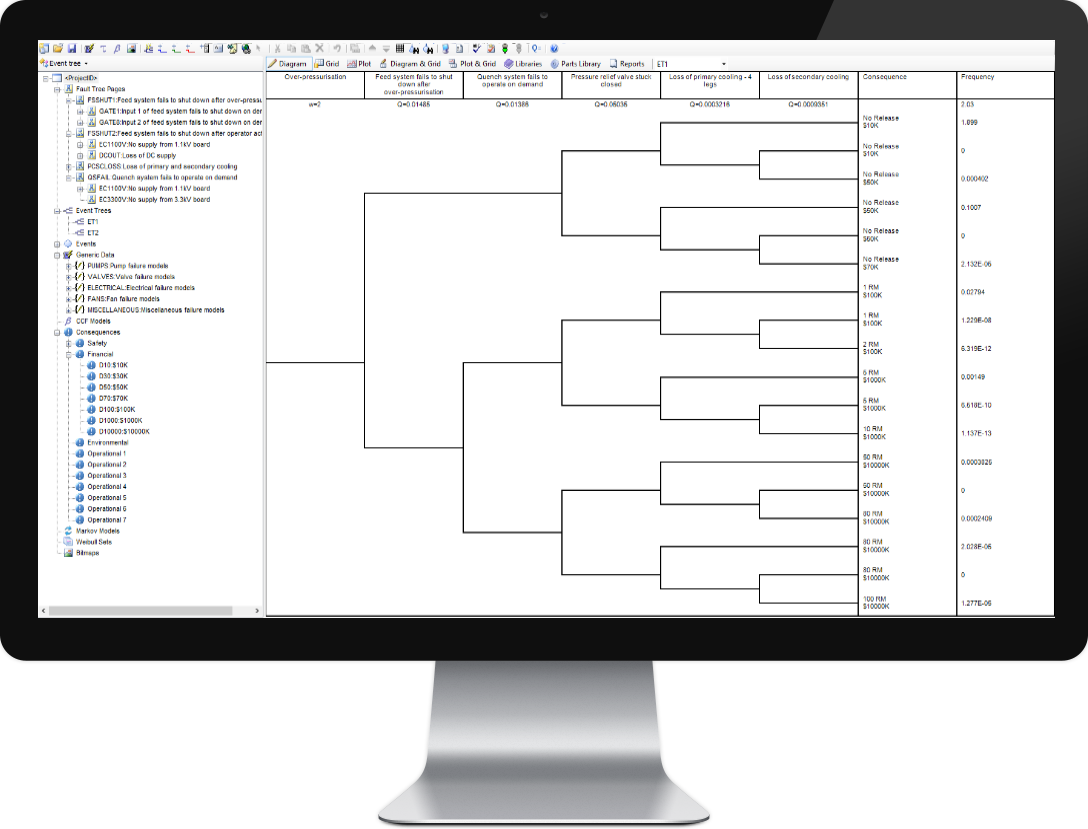
Event Tree Analysis in Isograph Reliability Workbench
Event tree analysis is the technique used to define potential accident sequences associated with a particular initiating event or set of initiating events. The event tree model describes the logical connection between the potential successes and failures of defined safety systems or safety functions as they respond to the initiating.

Risk Assessment Fault and Event Tree Analysis Free Essay Example
Probability of IGNITION being present = 0.2 + 0.05 + 0.1 = 0.35 Updating the diagram (and only showing the relevant part): Moving up again, we can now calculate the probability of the top event. These faults are below an AND gate, so we multiply the probabilities, giving 0.21 x 1 x 0.35 = 0.0735.

General scheme of the event tree proposed for the analysis of the... Download Scientific Diagram
An event tree analysis (ETA) is an inductive procedure that shows all possible outcomes resulting from an accidental (initiating) event, taking into account whether installed safety barriers are functioning or not, and additional events and factors. By studying all relevant accidental events (that have been identified by a preliminary hazard.
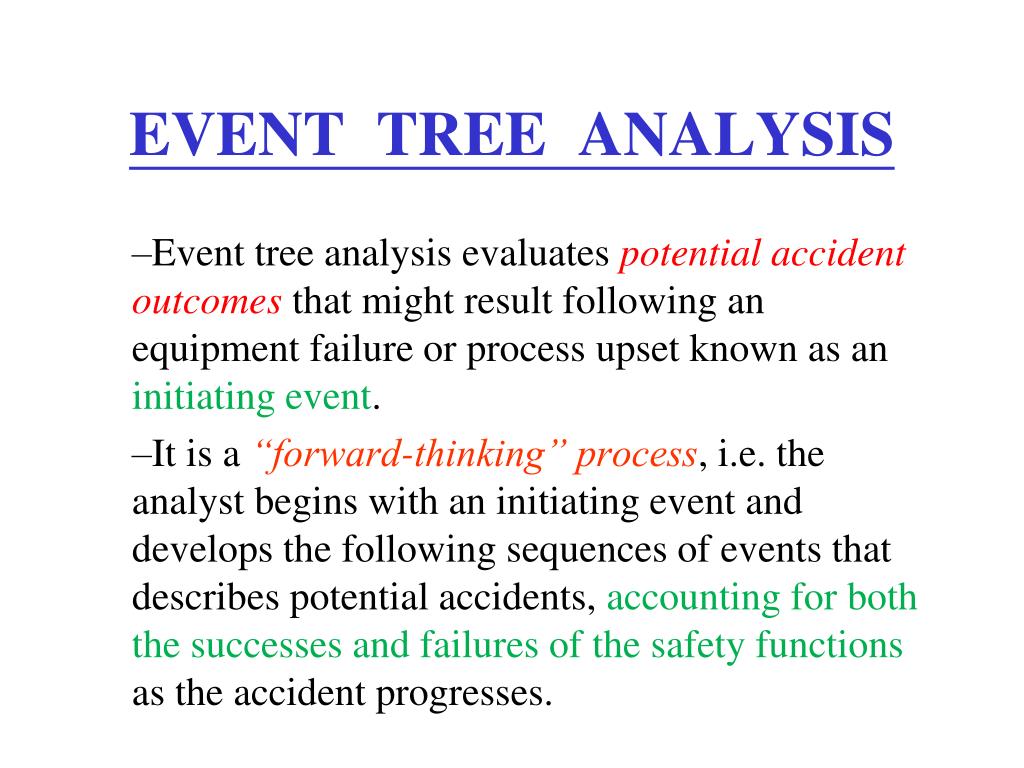
PPT EVENT TREE ANALYSIS PowerPoint Presentation, free download ID3862542
A method is presented for dealing with event-tree analysis under uncertainty. Fuzzy-set logic is used to account for imprecision and uncertainty in data while employing event-tree analysis. The fuzzy event-tree logic allows the use of verbal statements for the probabilities and consequences, such as very high, moderate, and low probability. The technique permits an analysis of the qualitative.
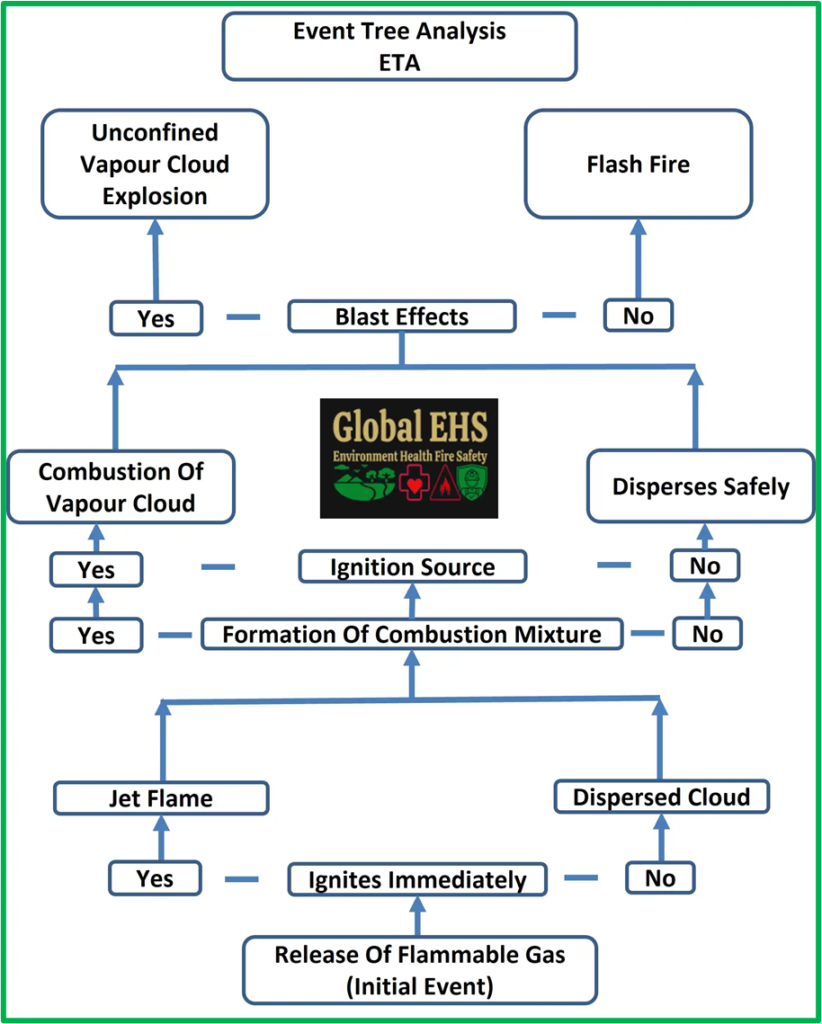
Event Tree Analysis
The FaultTree+ module in Reliability Workbench comes with an event tree analysis module that is unique in its ability to handle large scale problems and to fully handle success logic. The event tree model may be created independently of the fault tree model or may use fault tree analysis gate results as the source of event tree probabilities.
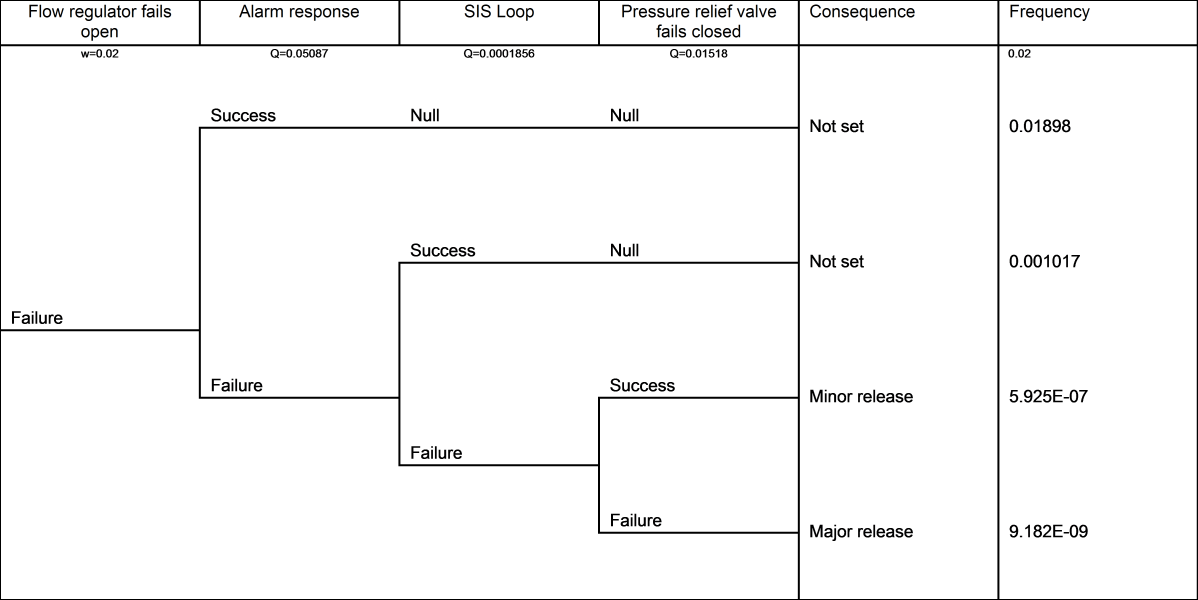
Linking Fault Tree and Event Tree Isograph
Event Tree Analysis (ETA) is a systematic methodology used to analyze accidents, dissecting them into a series of events that lead to the incident. By breaking down the sequence of events, experts gain insights into the contributing factors, allowing for better-informed decisions and preventative measures.

Proposed event tree with designated probabilities Download Scientific Diagram
An event tree is an analytical, diagrammatic representation of an event tree analysis study. An event tree displays a chronological series of subsequent events or consequences based on the analysis of an initiating event. Event tree analysis provides a model for examining the possible outcomes from a single event. It is an inductive, logical.
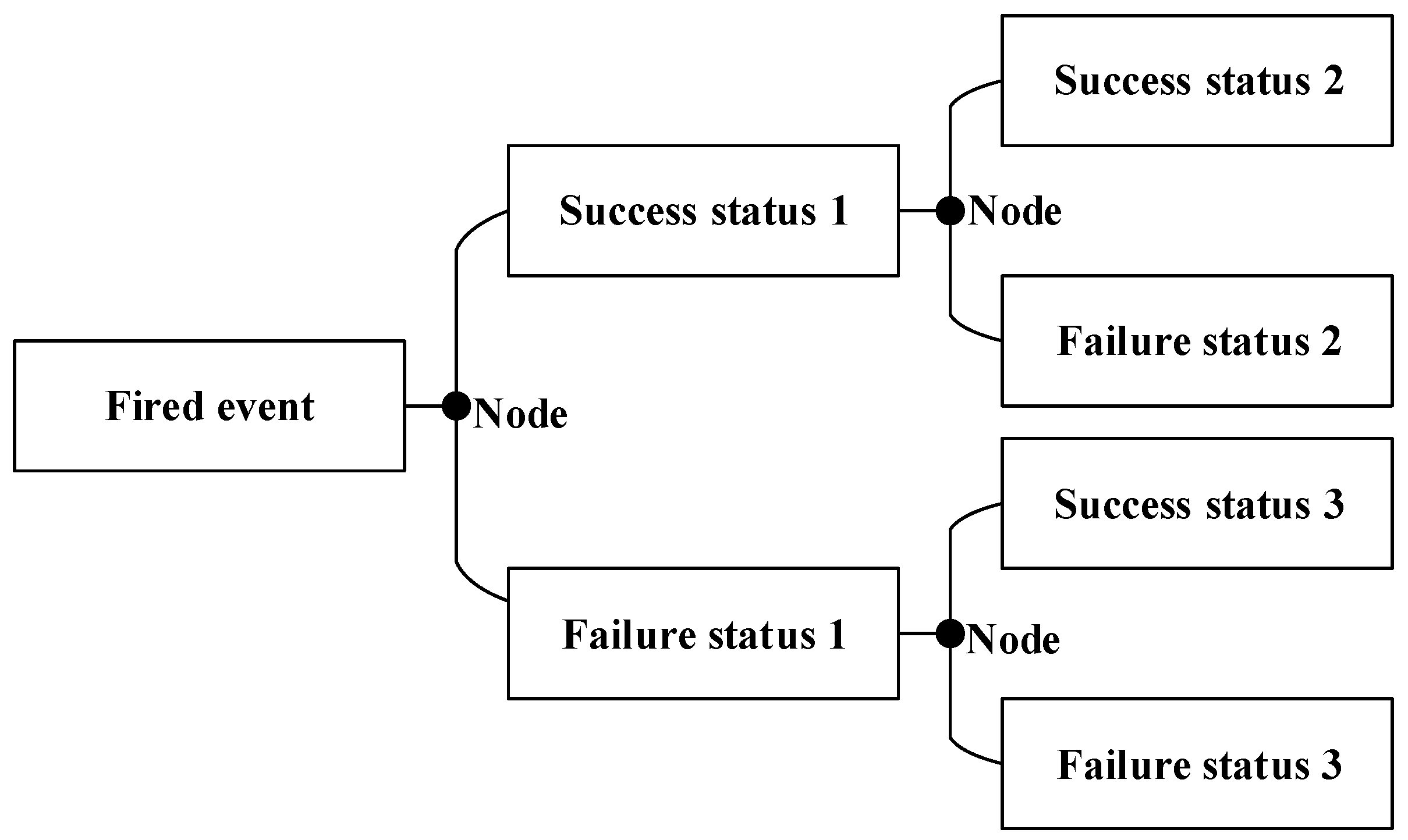
IJERPH Free FullText Risk Analysis of EarthRock Dam Failures Based on Fuzzy Event Tree Method
Fault tree and event tree analyses are two of the basic tools in system analysis. Both methodologies give rise to a pictorial representation of a statement in Boolean logic. We shall concentrate on fault tree analysis, but briefly explain the difference in the situations modeled by event trees and fault trees. Event trees use 'forward logic'.

Eventtree depicting the alternative for a planned attack.... Download Scientific Diagram
Event Tree (ET) analysis is a widely used forward deductive safety analysis technique for decision-making at a system design stage. Existing ET tools usually provide Graphical Users Interfaces (GUI) for users to manually draw system level ET diagrams, which consist of nodes and branches, describing all possible success

Event Tree Analysis, ETA Riskope
Event tree analysis ( ETA) is a forward, top-down, logical modeling technique for both success and failure that explores responses through a single initiating event and lays a path for assessing probabilities of the outcomes and overall system analysis. [1] This analysis technique is used to analyze the effects of functioning or failed systems.

A n example of event tree analysis Download Scientific Diagram
Event tree analysis (ETA) is an established risk analysis technique to assess likelihood (in a probabilistic context) of an accident. The objective data available to estimate the likelihood is often missing (or sparse), and even if available, is subject to incompleteness (partial ignorance) and imprecision (vagueness). Without addressing incompleteness and imprecision in the available data.

Eventtree analysis for small break loss of coolant accident. Download Scientific Diagram
Event Tree Analysis is a powerful technique used in risk assessment and decision-making, where the consequences can have significant impacts.